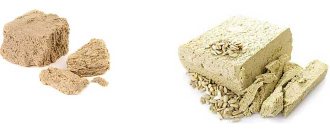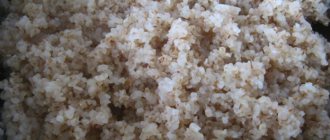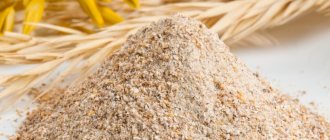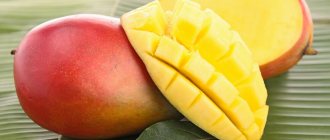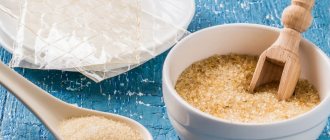Fructose is a natural sugar substitute that is often found in stores. It is often included in food and drinks. It is also used in its pure form. Although fructose is very popular today, there is no consensus regarding its effect on the body. Therefore, before using the product, you should carefully study its properties.
Fructose is often called levulose or fruit sugar. It is a monosaccharide that falls into the category of ketohexoses. The substance is an isomer of glucose. It is one of the most common sugars found in nature.
It can be found individually or as part of disaccharides and polysaccharides. In the first case, the substance is part of sucrose, in the second it is present in inulin. The composition is actively used in the food industry. It gives foods a sweet taste. The substance also performs important biochemical functions in the human body.
Chemical properties of fructose
The chemical properties of fructose are such that they can undergo reactions characteristic of monosaccharides. As a result, ethers and esters are formed. Acetals and glycosides are also formed.
The presence of a carbonyl group makes it possible to obtain addition products of nucleophilic reagents. These include peptides, amino acids, amines and other substances. When combined with phenylhydrazine, osazone is obtained. This substance is identical to glucose or mannose osazone.
The element is reduced to mannitol or sorbitol. This can also be done using the enzymatic method. The industrial method for producing mannitol is based on the catalytic hydrogenation of the carbonyl group of the substance. A nickel or copper catalyst takes part in this process.
In industrial conditions, catalytic oxidation of fructose is carried out. This is carried out by oxygen or air. The process involves catalysts based on noble metals. As a result, products such as 5-ketofructose and 2-keto-D-gluconic acid are formed.
The substance is unstable in solutions of alkalis and acids. This is its main difference from glucose and other aldoses. In an alkaline environment, the substance isomerizes into glucose and mannose.
When heated under alkaline conditions, fragmentation of the substance is observed. As a result, methylglyoxal, glyceraldehydes, and lactic acid are produced. Other decomposition products may also be synthesized.
As the temperature of solid fructose or its concentrated solution increases, dehydration occurs and condensation products are produced. When heated with the participation of amino acids, it is possible to obtain Maillard reaction products. They have color and smell.
When fructose is heated with the participation of acid, dehydration occurs. As a result, 5-hydroxymethylfurfural is produced. This feature underlies the reaction to fruit sugar - Selivanov's test.
Structural formula of fructose
Let's take a closer look at the structural formula of fructose. This element is a monosaccharide that belongs to the ketohexose group. The substance contains 3 chiral carbon atoms. This structure corresponds to 8 stereoisomers. These include fructose itself and its stereoisomers - sorbose, tagatose, psicose.
In liquid and solid states, fructose does not exist in a linear form, but as a cyclic hemiacetal. It is synthesized due to the addition of OH groups to the keto group. Hemiacetal is stable. In solution, the open-chain form is only 0.5%. In this case, the remaining 99.5% are cyclic forms.
If a hydroxyl group at C-5 is involved in the process, a five-membered ring is formed. It is called furanose. In this case, cyclic D-fructose is called D-fructofuranose. If cyclization is carried out taking into account the hydroxyl group at C-6, the formation of a six-membered pyranose ring occurs. This D-fructose is called D-fructopyranose.
With such cyclization, a new stereocenter appears at the hemiacetal carbon atom C-2. Therefore, the furanose and pyranose forms of D-fructose can have the form of 2 diastereomers. They are called anomers.
Metabolism of fructose
The metabolism of fructose occurs as follows. Most of the fructose, which is produced during the breakdown of sucrose, is transformed into glucose in the intestinal cells before entering the portal vein system. The remaining fructose is absorbed using a carrier protein. This process is called facilitated diffusion.
There are 2 ways of fructose transformation. Phosphorylation at the first carbon atom is considered to be the main one. The enzyme fructokinase takes part in this process. As a result, fructose-1-phosphate is produced.
The second pathway for fructose transformation is phosphorylation of the sixth carbon atom. This occurs with the participation of hexokinase. As a result, fructose-6-phosphate is formed. It is subsequently converted to glucose-6-phosphate. Moreover, the affinity for glucose for hexokinase is much higher than for fructose. Therefore, the process is rather weak.
Some people metabolize fructose incorrectly.
This is due to defects in 2 enzymes:
- Essential fructosuria
occurs when there is a deficiency of liver fructokinase. As a consequence, fructose phosphorylation is disrupted. This leads to an increase in fructose levels in the blood. This condition is called fructosemia. In this case, the substance leaves the body in the urine. This process is called fructosuria. The pathology is asymptomatic; - genetic fructose intolerance
is a consequence of a defect in the enzyme aldolase fructose-1-phosphate. The pathology is characterized by the appearance of convulsions, vomiting, and liver damage. Hypoglycemia also often develops, and the kidneys and brain are affected. Violation can be fatal. Hypoglycemia is caused by the inhibition of important enzymes by fructose-1-phosphate, which accumulates in tissues and blood. These include phosphorylase, aldolase, phosphoglucomutase. As a result, the energy supply to cells suffers.
What is the difference between fructose and sugar?
Fructose is a natural sugar that is obtained from fruits, honey, and berries. However, it has certain features and differences. Let's take a closer look at how fructose differs from sugar.
White sugar has many disadvantages. At the same time, it’s not just about high calorie parameters. A large amount of the substance negatively affects the functioning of the human body. Fructose has a sweeter taste. Therefore, a person can consume it in smaller quantities.
Fructose is considered a universal product. It is suitable even for people who suffer from diabetes. The decay of the element occurs very quickly and does not pose a danger to patients with this diagnosis. However, this does not mean that diabetics can consume fructose in any amount. In any case, you need to remember a sense of proportion.
With a relatively low calorie content, the product cannot be called dietary. When eating food with fructose, a person does not feel quickly full. That's why he tries to eat more and more. This causes stretching of the stomach. This eating behavior poses a real danger.
Fructose calories per 100 grams
Fructose is a salvation for those who cannot eat regular granulated sugar, because it is natural sugar made from corn or sugar beets, which is almost twice as sweet and easier to digest.
In addition, fructose normalizes blood sugar levels, having a low glycemic index, without causing side effects when consumed wisely. So, for example, for diabetic patients the norm per day is 50 grams.
But the calories in sugar and fructose are the same: about 400 kcal per 100 grams. How fructose fits into the diet of not only diabetics, but also those who are losing weight and those who want to eat healthy, read on.
What doctors say about diabetes
Doctor of Medical Sciences, Professor Aronova S. M.
I have been studying the problem of DIABETES for many years. It's scary when so many people die and even more become disabled due to diabetes.
I hasten to announce the good news - the Endocrinological Research Center of the Russian Academy of Medical Sciences managed to develop a medicine that completely cures diabetes mellitus. At the moment, the effectiveness of this drug is approaching 100%.
Another good news: the Ministry of Health has achieved the adoption of a special program under which the entire cost of the drug is compensated. In Russia and the CIS countries, diabetics up to
can receive the product
for FREE
.
Find out more>>
Fructose calories
The calorie content of fructose is 388 kcal, sugar - 398 kcal.
But the difference is that fructose is much sweeter, it turns out that you need to add it in smaller quantities, which means you will get fewer calories for the same degree of sweetness of the dish or drink. Fructose can retain moisture better than glucose, which helps keep foods sweetened with it fresher longer. What else is good about fructose:
- Serves as a natural flavor enhancer for berries, fruits, and drinks.
- Gives a lot of energy to the body and increases mental activity.
- It does not cause caries, and in general is not harmful to tooth enamel; on the contrary, it can remove the yellowness of teeth.
- Helps alcohol leave the body faster; it is even administered intravenously in case of poisoning of the corresponding nature.
- Fructose is cheaper than sugar.
- Low glycemic index.
- Reduces the risk of developing diathesis.
- It will help you quickly restore strength after illness, physical and mental stress.
What is stevia?
An alternative to glucose with fructose has already appeared - this is stevia. It is also a natural sweetener, although many people complain that it has an unpleasant aftertaste. Stevia is a plant many times sweeter than sugar. It has no contraindications, and contains a lot of useful vitamins, antioxidants, and tannins.
It lowers blood glucose levels and strengthens blood vessels. It has anti-inflammatory and antiviral effects, thanks to which some diseases of the gums and oral cavity are even treated with the help of stevia. It will help against pancreatitis, nephritis, cholecystitis, arthritis, osteochondrosis, and restore thyroid function. The only negative is its high price.
By consuming foods that naturally contain fructose, such as honey, berries and fruits, a person receives the necessary nutrients, but you should not abuse fructose as a sweetener, because it can cause harm instead of benefit.
However, you don’t need to give up sugar completely, so as not to lose all your physical and mental strength and not get tired quickly from exertion. Everything needs to be done and eaten in moderation, so as not to overdo it and not deprive yourself of something necessary and important. The choice is yours!
on the topic of the article
Stories from our readers
Conquered diabetes at home. It's been a month since I forgot about sugar spikes and taking insulin. Oh, how I used to suffer, constant fainting, calls to the ambulance...
How many times have I gone to endocrinologists, but they only say one thing - “Take insulin.” And now it’s been 5 weeks and my blood sugar levels are normal, not a single injection of insulin, and all thanks to this article.
A must read for anyone with diabetes!
Read the full article >>>
There are many natural sweet compounds; not all of them are equally actively used by humans. The most popular substance is sucrose, but its quantity is so difficult to control. This is where obesity and diabetes arise.
Online stores are full of offers of various substitutes, but each of them has its own benefits and harms. Fructose and sugar: what is the difference between these sweet substances? Is it worth giving up and switching to sweeteners? Let’s find out.
What is the difference between fructose and sugar?
From a purely chemical point of view, both compounds are carbohydrates. Sucrose is a disaccharide and includes glucose and fructose. Fruit sugar (fructose) is a monosaccharide, an isomer of glucose, it is colorless crystals, sweet, perfectly soluble in water.
Source: //AllDiabet.ru/fruktoza-kalorijnost-na-100-gramm.html
The benefits of fructose for the body
If fruit sugar is consumed correctly, it will only benefit the body. However, the recommended dosage should not be exceeded. It is permissible to eat a maximum of 25-45 g of product per day.
Eating small amounts of fructose can provide the following benefits to the body:
- The product is low in calories and helps avoid weight gain.
- May be present in the diet of people who suffer from diabetes, are overweight or prone to obesity.
- Does not affect the bone structure of the teeth. Thanks to this, it is possible to avoid the development of caries.
- It is beneficial during increased physical activity, as it provides the body with energy.
- Increases body tone.
- Helps cope with fatigue.
What is fructose: calories, benefits and harms
Fructose, whose calorie content is as much as 400 kcal, despite this is considered almost a dietary product that cannot harm weight. But is this really true, and what are the main benefits and harms of fructose, is described in detail in this article.
What is fructose
The calorie content of fructose is 400 kcal per 100 grams. However, it is considered a low-calorie carbohydrate in foods. Many people call fructose a natural analogue of sugar. Most often, this substance can be found in various fruits, vegetables and honey.
A brief description of what fructose is:
- calorie content – 400 kcal/100 g;
- food group – carbohydrates;
- natural monosaccharide, isomer of glucose;
- taste – pronounced sweet;
- glycemic index – 20.
Many, for example, have seen dietary fructose oatmeal cookies on store shelves, the calorie content of which is about 90 kcal per piece.
Fructose is one of the few sweets that is approved for consumption by people with diabetes. The thing is that, unlike sucrose, fructose does not affect the production of insulin and does not lead to an increase in blood sugar. That is why many people add this substance to their food instead of sugar.
However, is fructose, whose calorie content exceeds that of some fast foods, safe for your figure? And how many grams of fructose per day can you consume?
Fructose and excess weight
Many girls, trying to limit themselves from sweets, replace regular sugar with fructose, believing that in this way they will reduce the negative impact of carbohydrates on the body. The calorie content of fructose and sugar is almost the same - in the first case 400 kcal per 100 g, in the second - 380 kcal. However, despite this, for some reason it is fructose that people consider safer for their figure.
The theory that by replacing sugar with this substance you can avoid problems with excess weight is erroneous. In fact, fructose, among other things, can cause hunger. And with long-term use - a violation of certain hormones responsible for energy balance.
However, these negative effects only occur when fructose is consumed in excessive quantities. The daily intake of the substance for an adult is 25-40 g.
in fruits
If we talk about the permissible amount of fructose per day, it is worth taking a closer look at which fruits and berries contain it in the largest quantities. 25-40 grams of substance is:
- 3-5 bananas;
- 3-4 apples;
- 10-15 cherries;
- about 9 cups strawberries.
In addition, fructose is present in significant quantities in grapes, dates, pears, figs, raisins, watermelons, melons and cherries. This is why most of the products on this list are not included in the diet of people watching their figure. However, fructose has a number of positive properties.
Benefit for health
When consumed correctly, fructose is not only not dangerous to health, but can also be beneficial, which regular sugar certainly cannot do. For example, it has a tonic effect, helps restore energy and reduce fatigue.
Unlike sugar, fructose consumed in moderation does not harm teeth. Moreover, thanks to this monosaccharide, the risk of developing caries is reduced.
But its main advantage is that fructose does not increase blood sugar levels, being absorbed without the participation of insulin. And insulin, as we know, not only helps break down complex carbohydrates such as sugar and glucose, but also leads to the appearance of fat deposits. Therefore, fructose in reasonable quantities is recommended in some diets.
Harm from fructose
As for the negative aspects of the impact of this substance on the human body, there are several of them:
The first - as mentioned above - is the high energy value of fructose (400 kcal per 100 g). However, even the most avid sweet tooth will not be able to eat such a large amount of this monosaccharide.
Therefore, you should not be so afraid of this number. You can evaluate the information from a different perspective. So, for example, the calorie content of a teaspoon of fructose is only 9 kcal.
But this is quite enough to add sweetness to some dish, since fructose is much sweeter than sugar.
The second negative side is that excessive consumption of fructose can lead to the development of cardiovascular diseases and disruption of the body's metabolic processes.
In addition, Israeli scientists were able to establish that frequent use of this substance can lead to premature aging. Although it is worth clarifying here that the experiments were carried out not on humans, but on mice.
There are no special prohibitions on consuming fructose. But it should be remembered that this monosaccharide should be consumed in moderation.
Source: //FB.ru/article/413160/chto-takoe-fruktoza-kaloriynost-polza-i-vred
Products containing fructose
Fructose is found in natural products, such as vegetables, fruits, honey, legumes.
Fructose is also added to the following foods:
- confectionery;
- baking for diabetics;
- Dessert;
- sweet drinks and juices.
Sometimes people use fruit sugar to make homemade baked goods in hopes of reducing their caloric intake.
Fruit sugar is found not only in fruits, but also in vegetables that do not have a pronounced sweetness in taste. Sources of fructose include onions, asparagus, and potatoes. It is also present in sweet peppers, carrots, and broccoli. In addition, the substance is found in legumes - in particular, in lentils and beans.
A large amount of the component is present in sweet fruits and berries. It contains apples, pears, and grapes. There is fructose in black currants, cherries, and cherries.
Fructose for diabetes
This product has a low glycemic index. Therefore, a small amount of fructose can be consumed for diabetes. The processing of fruit sugar requires 5 times less insulin than the absorption of glucose.
It is worth reading that the substance is not able to eliminate hypoglycemia - a decrease in blood sugar. The fact is that foods containing fructose do not lead to a sharp increase in blood sugar levels.
People who suffer from type 2 diabetes and are often obese should limit the amount of sweetener to 30 g. Otherwise, there is a risk of significant deterioration in their health.
Fructose: benefits and harms
Fructose is a simple carbohydrate that is one of the three main forms of sugar that the human body uses for energy. It is an important component (along with glucose) of sucrose, table sugar. For the most part, fructose is found in plant foods: fruits, vegetables, berries, honey and some cereal products.
Let's take a closer look at which products contain fruit sugar:
- Sweet wines (for example, dessert);
- Fruits and juices - apples, cherries, grapes, guava, mango, melon, orange, pineapple, quince;
- Most dried fruits, including currants, figs, raisins;
- Honey and maple syrup;
- Candies and foods high in sucrose;
- Carbonated and energy drinks;
- Corn syrup – High Fructose Corn Syrup or HFCS;
- Sweet bakery products;
- Chewing gum, etc.
What is the difference between fructose and sugar?
The main difference between this monosaccharide and sucrose (as well as corn syrup) is its increased level of sweetness. The calorie content of fructose is similar to that of sugar, but it is twice as sweet. Consequently, food containing this carbohydrate will contain fewer calories than identical products of the same level of sweetness, but with sucrose.
The difference between sugar and fructose is also that the latter is absorbed by the body without causing a sharp release of insulin. It has a low glycemic index, meaning it does not cause a sharp rise or fall in blood sugar levels. Therefore, it can be eaten by people with diabetes and people suffering from obesity.
Harm from fructose
Every now and then new articles appear in English-language publications screaming about the dangers of fructose and advocating giving up almost all fructose-containing products, including fresh fruits and berries.
It is believed that obesity and disruption of many physiological systems of the body are caused precisely by the consumption of this monosaccharide.
However, you should not immediately abandon it after reading one of these publications - there are some nuances here.
The Dangers of Eating High Fructose Corn Syrup
It is known that fruit sugar is often used as a natural sweetener in snack foods and soft drinks, and is also the main component (the second component is glucose) in another popular sweetener, corn syrup, which is characterized by its high content of this carbohydrate.
This syrup and fructose are not the same thing. Many people mistakenly consider these terms to be interchangeable, which results in a negative opinion about the monosaccharide itself. In most cases, it is the misuse of HFCS syrup that contributes to obesity and the development of diseases (especially in Americans).
It's also worth remembering that because corn syrup is so cheap, it's used as an additive in a huge number of foods.
For example, the average American, eating bread or porridge, unknowingly faces the problem of high levels of fruit sugar and, as a result, obesity, diabetes, heart problems, increased cholesterol levels, etc.
In addition, the production of such syrup usually uses genetically modified corn, which also poses certain health risks.
As we can see, the problem of excess weight lies in the sugars that a person consumes. Studies were conducted in which it became known that 48% of people whose diet included corn syrup gained weight much faster than those who did not consume it.
Therefore, it is important to understand in what quantities fructose should be used instead of sugar, where it should be contained, and what negative consequences its abuse can lead to.
Harmful properties of fructose
Remember that people tend to consume excess amounts of foods, and foods rich in fruit sugar are no exception. Excessive consumption can lead to health problems such as:
- Increased levels of uric acid in the blood, and, as a result, the development of gout and high blood pressure.
- The emergence of non-alcoholic fatty liver disease.
- Development of leptin resistance. A person ceases to be susceptible to leptin, a hormone that regulates hunger. As a result, a “brutal” appetite arises and the risk of developing many diseases, including infertility, increases.
- When eating food with fruit sugar, you do not feel the feeling of satiety that is characteristic of foods containing sucrose. Thus, a person runs the risk of eating too many foods that contain this monosaccharide.
- Increased levels of bad cholesterol and triglycerides in the blood.
- Insulin resistance, which can ultimately cause obesity, type 2 diabetes, the development of cardiovascular diseases and even oncology.
The listed negative consequences practically do not apply to the consumption of raw fruits. After all, the harm of fructose is, for the most part, caused by eating foods with added sugars.
It should also be noted that, unlike sweet desserts and carbonated drinks, low-calorie fruits can significantly improve a person’s physical condition and health due to their high content of fiber, vitamins, micro- and macroelements and other vital components. When consumed, they will cleanse the body, support living intestinal microflora, prevent and treat diseases, and improve brain function.
Benefits of fructose
Eating foods containing fructose can actually benefit the human body. However, it should mainly be fresh fruits and vegetables, and not dishes generously flavored with corn syrup and large quantities of sweetened drinks.
So, we list the main beneficial properties of fruit sugar:
- Low calorie content of fructose (about 399 kcal per 100 grams of product).
- Possibility of use in the diet of diabetics and overweight people.
- The benefits of fructose also include reducing the likelihood of developing caries.
- It is a good source of energy during heavy or intense physical activity.
- Has tonic properties.
- Reduces fatigue.
Fructose instead of sugar is a safe amount
According to a meta-analysis of clinical studies, it is believed that about 25-40 g of this monosaccharide can be consumed per day. This is equivalent to 3-6 bananas, 6-10 cups of strawberries, 10-15 cherries or 2-3 apples per day.
However, lovers of sweets (including foods that contain table sugar) should plan their diet with caution. After all, even a half-liter bottle of soda sweetened with HFCS corn syrup contains about 35 grams of fruit sugar. And for one gram of sucrose there are about 50% glucose and 50% fructose.
Even agave nectar, marketed as a healthy product, can contain up to 90% of this monosaccharide. Therefore, it is extremely important not to overuse fructose and sugar-containing products and to know moderation in everything.
- //www.caloriecontrol.org/sweeteners-and-lite/fructose
- //www.muscleforlife.com/do-fructose-and-fruit-make-you-fat-and-unhealthy/
- //authoritynutrition.com/why-is-fructose-bad-for-you/
- //www.foodintolerances.org/fructose-food-table.aspx
Source: //properdiet.ru/uglevody/646-fryktoza-polza-i-vred/
Fructose for weight loss
People who are overweight should be careful when consuming fructose. The fact is that a large amount of the substance is transformed by the liver into fatty acids. This leads to storing the product in reserve.
In addition, there is evidence that fructose during weight loss can suppress the action of the hormone leptin, which is responsible for controlling appetite. As a result, the signal about saturation does not reach the brain. This increases appetite and leads to eating excessive amounts of food.
Fructose calories
Fructose and sugar are a convenient basis for discussion, a trading idea for manufacturers, a topic for study. The sweetness of fructose is unparalleled: it is 70% sweeter than any of the known saccharides and is three times as sweet as glucose.
Calorie content of 100 g of sugar – 387 kcal; fructose – 399 kcal.
The absorption of fructose does not require insulin. Moreover, each molecule of white beet sugar is half composed of sucrose. For this reason, most sweeteners are made based on fructose, which, in turn, are used in the confectionery industry.
Fructose is recommended for use in diets: therapeutic, sports, fasting.
Fructose
Fructose is a natural sweetener that is a monosaccharide. It is found freely in all fruits, some vegetables and honey. Compared to sugar, fructose has significantly more benefits for the health of the body.
Fructose effectively replaces sugar and is highly soluble in water. Therefore, it is widely used in cooking. It is used to make desserts, ice cream, baked goods, drinks, and dairy dishes. Fructose is used in home canning of fruits or vegetables, in the preparation of jams and preserves.
Using fructose, you can enhance the aroma of berries and fruits, reducing their calorie content.
The benefits and harms of fructose
Fructose is a carbohydrate that has a low glycemic index. Therefore, when using it, blood sugar levels do not rise and insulin is not released. The opposite reaction occurs when consuming sugar.
Fructose differs from other carbohydrates in that it is quickly and completely eliminated from the blood on its own, without the need for insulin. This property of fructose is very beneficial for diabetic patients. Fructose is used in dietary nutrition.
The caloric content of fructose is about 390 kcal, which is the same as the caloric content of sugar. The only difference is that fructose is absorbed much faster and converted into energy. However, you should not think that you can eat it as much as you like without harm to the body.
This is wrong! When consumed over 45 g per day, fructose is converted by liver cells into fatty acids, that is, into pure fat. And instead of the desired weight loss, you will get obesity. No other cells in our body can process and metabolize fructose.
Fructose is almost 2 times sweeter than sugar and 3 times sweeter than glucose, which means it is required almost 2 and 3 times less, but some people, instead of reducing the number of calories, consume even sweeter foods, since they do not reduce the dose of sweetness, hence the harm.
If you have a small mobile device screen, then the full version is not recommended.
Copying ANY text information is PROHIBITED.
Source: //am-am.su/920-fruktoza.html
Calorie content of fructose, benefits and harms of its use, is it suitable for those on a diet
Fructose is a salvation for those who cannot eat regular granulated sugar, because it is natural sugar made from corn or sugar beets, which is almost twice as sweet and easier to digest.
In addition, fructose normalizes blood sugar levels, having a low glycemic index, without causing side effects when consumed wisely.
So, for example, for diabetic patients the norm per day is 50 grams.
But the calorie content of sugar and fructose is the same: approximately 400 kcal per 100 grams. How fructose fits into the diet of not only diabetics, but also those who are losing weight and those who want to eat healthy, read on.
The calorie content of fructose is 388 kcal, sugar - 398 kcal. But the difference is that fructose is much sweeter, it turns out that you need to add it in smaller quantities, which means you will get fewer calories for the same degree of sweetness of the dish or drink. Fructose can retain moisture better than glucose, which helps keep foods sweetened with it fresher longer.
What else is good about fructose:
- Serves as a natural flavor enhancer for berries, fruits, and drinks.
- Gives a lot of energy to the body and increases mental activity.
- It does not cause caries, and in general is not harmful to tooth enamel; on the contrary, it can remove the yellowness of teeth.
- Helps alcohol leave the body faster; it is even administered intravenously in case of poisoning of the corresponding nature.
- Fructose is cheaper than sugar.
- Low glycemic index.
- Reduces the risk of developing diathesis.
- It will help you quickly restore strength after illness, physical and mental stress.
The harm from consuming fructose is the same as from regular sugar, so fructose is also contraindicated for people suffering from diseases associated with excess weight.
And here it doesn’t matter how many calories there are in fructose, how much sweeter and better it is. Because while glucose saturates, fructose does not have this property; on the contrary, it even stimulates the appetite.
And since fructose is absorbed faster, it becomes easier to gain weight with it.
In the body, it is absorbed only by the liver, processing it into fats, i.e. into hated fatty deposits. Glucose affects the entire body as a whole.
And recent studies give every reason to believe that people who consume foods with fructose in large quantities may experience problems with the stomach and intestines, such as bloating, constipation, flatulence, and diarrhea. An excess of fructose can even cause heart disease and vascular problems.
An alternative to glucose with fructose has already appeared - this is stevia. It is also a natural sweetener, although many people complain that it has an unpleasant aftertaste. Stevia is a plant many times sweeter than sugar. It has no contraindications, and contains a lot of useful vitamins, antioxidants, and tannins.
It lowers blood glucose levels and strengthens blood vessels. It has anti-inflammatory and antiviral effects, thanks to which some diseases of the gums and oral cavity are even treated with the help of stevia. It will help against pancreatitis, nephritis, cholecystitis, arthritis, osteochondrosis, and restore thyroid function. The only negative is its high price.
By consuming foods that naturally contain fructose, such as honey, berries and fruits, a person receives the necessary nutrients, but you should not abuse fructose as a sweetener, because it can cause harm instead of benefit.
However, you don’t need to give up sugar completely, so as not to lose all your physical and mental strength and not get tired quickly from exertion. Everything needs to be done and eaten in moderation, so as not to overdo it and not deprive yourself of something necessary and important. The choice is yours!
Fructose intolerance
Fructose intolerance is called malabsorption or fructosemia. This is a genetic pathology that is associated with fructose-1-phosphate aldolase deficiency. As a consequence, there is an excess accumulation of fructose-1-phosphate in the kidneys, liver and intestines.
The disease can appear at an early age when eating foods containing fruit sugar. These include berries, fruits, sugar, honey. As a result, a person develops unpleasant symptoms - anorexia, enlarged liver, decreased blood sugar levels, and vomiting. In rare cases, jaundice and ascites develop.
In some situations, the disease is fatal. Provoking factors are acidosis, hypoglycemia, and increasing cachexia. Hepatocellular abnormalities can cause cirrhosis or liver failure. If you choose a diet that does not include fructose in time, you can stop the progression of the disease.
Calorie difference between fructose and sugar
Fructose and sugar are a convenient basis for discussion, a trading idea for manufacturers, a topic for study. The sweetness of fructose is unparalleled: it is 70% sweeter than any of the known saccharides and is three times as sweet as glucose. Calorie content of 100 g of sugar – 387 kcal; fructose – 399 kcal.
The absorption of fructose does not require insulin. Moreover, each molecule of white beet sugar is half composed of sucrose. For this reason, most sweeteners are made based on fructose, which, in turn, are used in the confectionery industry.
Fructose is recommended for use in diets: therapeutic, sports, fasting.
Benefits or harms of fructose for diabetics
Difference in effects on the body
The digestive process of absorbing sugar is not easy. A sweet product consisting of half glucose, when entering the stomach, stimulates the release of insulin: a hormone that helps transport glucose molecules to cell membranes.
At the same time, as it turned out, not all insulin is accepted by the body. Often the cells do not respond to the presence of the hormone.
As a result, a paradoxical situation arises: insulin and sugar are present in the blood, but the biological unit, the cell, cannot use it.
If sugars enter through the stomach, the endocrine glands stimulate the production of another type of hormone, which affects the production of insulin of the required quality.
In order for the resulting insulin to be absorbed, all systems must work dynamically: physical activity helps to increase the metabolic capacity of cells.
Their membrane membranes allow glucose to pass into the cytoplasm, after which it is processed by all cells of the body.
Fructose is absorbed by the body without the participation of the hormone insulin, which makes it different from other sugars. Moreover, the monosaccharide enters through the walls of the intestines and stomach directly into the blood. During these stages, some of the fructose is converted to glucose and consumed by cells. The rest of the fructose goes to the liver, where it is processed into other substances, mainly fats.
Positive effect of fructose
- The calorie coefficient of fructose is low - no more than 0.4.
- Does not increase blood sugar levels.
- Reduces the likelihood of caries - does not create a nutritious environment in the oral cavity.
- Helps increase the physical activity of the body and has a tonic effect.
- Has a pronounced energetic effect.
- It is characterized by unsurpassed sweetness.
Calorie content of sugar in grams and teaspoon
Side effect of excess fructose consumption
The peculiarity of the food route of fructose - directly to the liver, leads to the creation of increased loads on this organ. As a result, there is a danger that the body will lose the ability to perceive insulin and other hormones. The expected list of deviations is as follows:
- development of hyperuricemia - excess uric acid in the circulatory system. One of the consequences of this process is the manifestation of gout;
- the development of diseases associated with increased pressure in the vessels of the circulatory system;
- the occurrence of NAFLD – non-alcoholic fatty liver disease;
- resistance to leptin occurs, a hormone that controls fat intake. The body ignores leptin levels and signals a persistent deficiency. As a result, obesity and infertility develop;
- there is no mechanism for notifying the brain and other organs of the nervous system about saturation. A special mechanism for the absorption of fructose does not allow a person to experience a feeling of fullness when consuming it. As a result, the maximum consumption threshold is easily overcome by the body;
- accumulation of excess cholesterol and fats - triglycerides in the blood;
- the occurrence of insulin resistance - the main cause of the development of type 2 diabetes, heart disease, vascular disease, and in some cases, oncology.
Such phenomena are not associated with fruit consumption. The danger lies in the intake of synthesized or isolated fructose with food - the main component of confectionery products and sweet drinks.
Fruit sugar and beet-cane sugar
The recommendations of expert nutritionists contain clear data: the consumption of fructose should be limited - no more than three teaspoons of this substance should be contained in the daily diet - 25-40 grams.
For comparison, the smallest standard bottle of carbonated drink contains 35 grams of fructose dissolved. Agave nectar contains 90% of fruit sugar.
All of these products contain sucrose, derived from corn starch.
A similar dose of naturally occurring fructose obtained from fruits has a completely different effect on the body. The limiting amount of dissolved fructose is contained in five bananas, several glasses of strawberries, and three apples. There is no doubt about the usefulness of natural fruits recommended for children, their difference from nectars and fructose-containing drinks.
Food sorbitol – a natural sugar substitute
The fruit contains a natural sugar-like sweetener alcohol: sorbitol. This substance, which cleanses the liver and stimulates intestinal activity, is present in cherries and apricots. Rowan is especially rich in its content.
Sorbitol is not very sweet: fructose and sugar are much sweeter. Regular sugar, for example, is three times sweeter than sorbitol, and fruit sugar is almost eight times sweeter.
The beneficial qualities of sorbitol include saving vitamins in the body and normalizing the bacterial environment of the intestine.
Glucite (another name for the substance) promotes the active functioning of the liver and kidneys, stimulates the elimination of harmful components of waste products from the body.
It is often used instead of sugar as additives, such as in chewing gum. Its ability to preserve the consumer quality of food products is known.
Can you eat honey if you have diabetes?
Nutritionists recommend limiting the consumption of sorbitol. Abuse of the product can cause discomfort in the gastrointestinal system. The maximum amount of glucite that can be safely consumed is 30 grams.
Source: //diabetes.propto.ru/article/raznica-kaloriynosti-fruktozy-i-sahara

